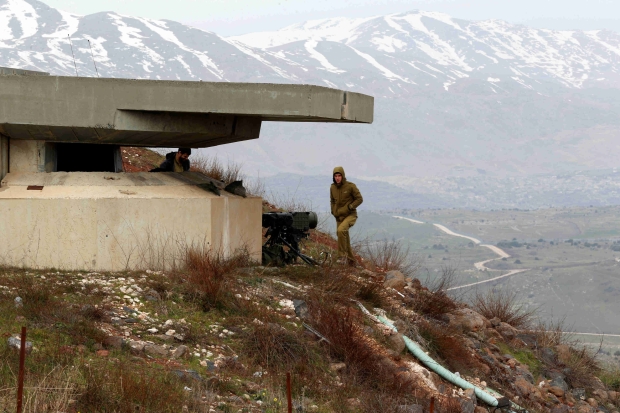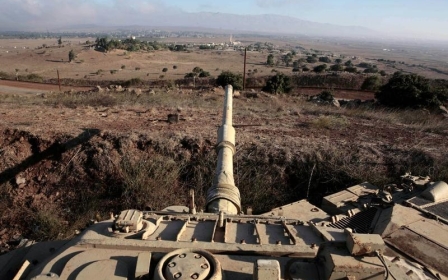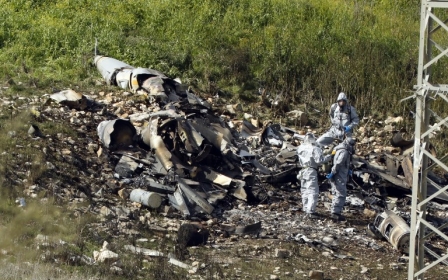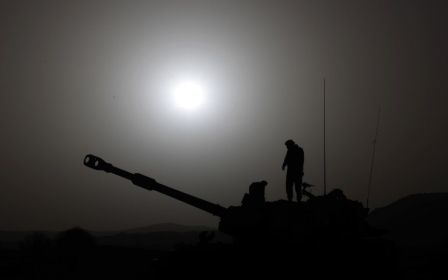As tensions rise, neither Iran nor Israel want war
The chain of events over Syria early on Saturday was the closest Israel and Iran have ever been to direct military confrontation. But the military punches between Israel-Syria-Iran also contained a few more "firsts".
It was the first time an Iranian unmanned drone had penetrated Israeli space - in the past, Iranian-made drones that infiltrated Israel were operated by Hezbollah from Lebanon.
This time it was an all-Iranian operation led by the al Quds force: the decision, the launch and the operational control and guidance.
It was also the first time that an Israeli warplane had been downed by enemy (Syrian) missile since 1982. And it was the largest Israeli attack against Syrian anti-aircraft batteries since the same year, during the Lebanese civil war.
Both sides are boasting of their achievements. Israeli generals have praised the precise intelligence which helped the Israeli Air Force to identify, follow and eventually to shoot down an advanced Iranian drone.
An IAF senior officer indicated that it was modelled on a US drone that had been intercepted by Iran.
And the Iran-Hezbollah-Syrian axis has celebrated the blow inflicted on the proud Israeli air force.
Pursuing strategies
Nevertheless, the basic reality and the conflicting interests have not changed. Israel remains the strongest military force in the region, and its air power and intelligence are evident almost daily, even in this incident.
All in all, the incident indicates that the tension between Israel and Iran over its involvement in Syria and Lebanon is growing and not going away. Both sides are determined to keep pursuing their strategies.
Iran's interests are to deepen its involvement in Syria and to benefit from the economic dividends once the war is over and full stability restored. At the same time, Tehran seeks to use Syria as a future launching pad against Israel.
For this purpose, it wants to build intelligence posts near the Syrian-Israeli border and production facilities for long-range and precision missiles, mainly to supply them to its Hezbollah ally. Iran also plans to construct similar production sites in Lebanon itself.
Israel, on the other hand, wants to preserve its freedom of action in Syria and Lebanon to prevent the deployment of Iran's troops or Iranian proxies (the international Shia militias and/or Hezbollah) - near its border, to stop weapon supplies to Hezbollah and to prevent the construction of missile factories.
To that end, Israel uses both diplomacy and military strength. It uses Russia as an intermediary to convey its messages to the Syrian-Iranian-Hezbollah axis. And if they don't pick up on those messages, Israel uses its air force, which, since the beginning of the Syrian civil war, has attacked Syrian and Iranian targets on at least 100 occasions. In most cases, Israel has not publicly claimed responsibility, to leave its operations opaque.
But Israel also doesn't want to find itself in a direct military confrontation with the tripartite axis. It is clear to Israeli military commanders and the cabinet that if a new war breaks out it will be conducted on two fronts - Syria and Lebanon - and with those countries' huge arsenal of more than 100,000 rockets and missiles, Israel's civilian population will suffer heavily.
Israeli fears
This Israeli fear was clearly demonstrated in the decision-making process which lay behind the drone being shot down over Israel and not Syria.
Israel knew in advance that Iran intended to launch it, so followed the drone from the moment of launch and decided to shoot it not over Syrian or Jordanian air space but only after it entered Israeli space. Why? In order not to provoke Iran and provide it with a pretext for retaliation.
But it seems from Iran's response that it also doesn't want to escalate things.
Iran didn't launch missiles against the Israeli planes that flew over Syria after the drone was shot down. Syria was the only party to shoot at them.
Iran initially denied that Israel had shot down one of its aerial vehicles, describing the Israeli version a "lie". Tehran then claimed it had been shot down over Syria, not Israel.
These reactions were all evidence that Tehran was restraining itself in order to prevent undesired escalation.
Indeed, both sides continue their efforts to pursue their strategies and interests without being dragged into a war.
The name of the game they play is "containment". They are trying to push the envelope to test the reaction and limits of the other side; if they realise that they have gone too far, they quickly stop.
The Russian game is even more complex. The Kremlin's ultimate interest is to stabilise the Syrian regime and eventually to reap economic dividends. At the same time, Russia is playing a double game.
It still needs Iran and its proxies as boots on the ground to finish off the remaining pockets of resistance to the government of Syrian President Bashar al-Assad.
Yet it also allows the Israeli air force, with which it has established official channels of communication, to operate freely against its two allies.
As for Assad, he knows very well that Israel is the major force with the power to prevent him achieving his goal to reinstate his full authority over all of Syria.
Yet it has to be remembered that the Middle East players are sometimes unpredictable. Its past and history show us that sometimes wars break out due to miscalculations, against the intentions of one or both sides.
Yossi Melman is an Israeli security and intelligence commentator and co-author of Spies Against Armageddon.
The views expressed in this article belong to the author and do not necessarily reflect the editorial policy of Middle East Eye.
Photo: A woman sits near a sign at Mount Bental, an observation post in the Israeli-occupied Golan Heights that overlooks the Syrian side of the Quneitra crossing (AFP).
This article is available in French on Middle East Eye French edition.
New MEE newsletter: Jerusalem Dispatch
Sign up to get the latest insights and analysis on Israel-Palestine, alongside Turkey Unpacked and other MEE newsletters
Middle East Eye delivers independent and unrivalled coverage and analysis of the Middle East, North Africa and beyond. To learn more about republishing this content and the associated fees, please fill out this form. More about MEE can be found here.






